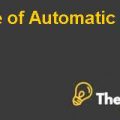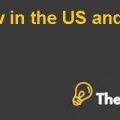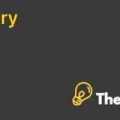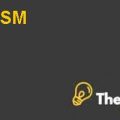Marriott Corporation Case Study Solution
Introduction
Marriott Corporation initiated its execution by J. Willard Marriott in 1927. After its establishment and a span of 60 years, the business grew to one of the largest food and lodging services firms in the US. In 1987 the company recorded a profit of $223 million and sales of $6.5 billion. There are three main business lines in the firm i.e. contract services, lodging, and restaurants. Out of these lodging is the most beneficial as its contribution is around 51% for the firm while restaurant and contract services contribute 16% and 33% respectively. (Ruback, 1998)
The main strategic objectives of the firm include
- Securing and maintaining the top position in the industry.
- Most reputed employer.
- Efficient provider.
- Most profit earning business body.
Apart from this, the firm has undertaken an effective financial strategy based on four important aspects:
- Not owning but managing the firm’s assets.
- Debt usage maximization
- Maximizing shareholder values by investing in specific projects.
- Consent to repurchase the shares that are undervalued.
Marriott hotel range is one of the largest in the US and is heading towards sustaining the topmost position in the US. They have incorporated an excellent development process, identifying and analyzing the market upgrading development programs, and potential profitability assessments. These traits have led them to dominate the industry and win loyal customers thus standing at the top.
For the evaluation of the potential investments, discounted techniques for cash flows were exclusively adopted by the corporation. The amount of debt of the firm was assessed through the analysis of the ability of the firm to service its debt. The corporation regularly calculates the ‘warranted equity value’ and whenever the market price falls below that value, the stocks are quickly repurchased. This is an important factor for the firm to consider and the firm has more confidence in the warranted equity value than the increasing or decreasing market share values.
Problem Statement
Weighted Average Cost of Capital or WACC for Marriott and its three divisions is to be calculated and analyzed which division is more profitable and must be considered for further development by the discounting of cash flows with proper hurdle rates to best suit the firm’s execution.
Situational Analysis
Risks Associated with Marriott’s CAPM Model:
To assess the company’s cost of equity, Marriott practices the Capital Asset Pricing Model (CAPM). However there are various risks associated with using this model to estimate the cost of equity for Marriott
In order to use CAPM model, the company would require to use several market assumptions like the market returns, risks etc. But these assumptions could not always be true and fluctuate based on the irrational market behaviors of the participants. That may lead to inaccuracy of results.
The CAPM model also consider and estimates values based on the historical performances of the market participants. But it is to be noticed that CAPM model is used to estimate the future performances. For that matter the reliance on historical data for estimating cost of equity may lead towards inaccuracy because of changing market conditions.
This model is sensitively impacted by the changes in estimates such as the risk free rates or the market risk premiums, a minor change in these input could lead to major change in the output, and this might not represent the actual risk in the investment.
Another risk associated with this model is that it only considers the systematics risks and not the risks that are unsystematic in nature. This means that it could consider the risks that re common for the overall market and does not account for the risk that are specific to the companies in particular.
Overall, while the CAPM is a widely used method for estimating the cost of equity, it is not without its limitations and risks. Marriott would need to carefully consider these risks when using CAPM to estimate the cost of equity.
Risks Associated with Marriott’s Hurdle Rates (WACC)
There are several risks related to Marriott's hurdle rates (WACC) for each of the three divisions given the target debt policy for that division, and for Marriott as a whole:
There may arise inaccuracy of calculations because of the inaccurate estimates and errors in assumptions. That is why it is important for Marriott to make sure that its estimates for growth rates, future cash flows, and discount rates are the most accurate as it is possible, so that the miscalculations of the WACC or hurdle rates is avoided.
The hurdle rate could also be significantly impacted with the volatile interest rates. The higher the interest rates the higher would be the hurdle rates or the WACC. Similarly the lower the interest rates the lower would be the WACC. Hence it is important for Marriott to carefully consider and watch for any fluctuations in the interest rates..........
Marriott Corporation Case Study Solution
This is just a sample partial case solution. Please place the order on the website to order your own originally done case solution.







